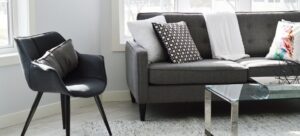Introduction
Choosing the right color for your interior can be a daunting task, with numerous options available. Two popular choices, wool skein and accessible beige, stand out for their unique qualities. In this article, we’ll delve into the characteristics of each color, explore their applications in different spaces, and provide valuable insights to help you make an informed decision for your home.
Understanding Wool Skein
Wool skein, a soft and neutral color, adds a touch of warmth to any space. Ideal for creating a cozy atmosphere, wool skein works well in living rooms and bedrooms. Its subtle undertones can evoke a sense of comfort and relaxation, making it a popular choice for those seeking a tranquil ambiance in their homes.
Exploring Accessible Beige
Accessible beige, on the other hand, offers a versatile option for interior color schemes. This neutral hue complements various design styles and works exceptionally well in open spaces, such as kitchens and dining areas. Accessible beige contributes to a sense of sophistication, creating a welcoming and elegant environment.
Comparing Wool Skein and Accessible Beige

When it comes to choosing the perfect color for your interior space, the decision often boils down to subtle nuances and personal preferences. In this section, we’ll delve into a detailed comparison of two popular choices: Wool Skein and Accessible Beige.
Color Undertones and Nuances
Wool Skein: This color boasts warm undertones that lean towards beige and cream. It exudes a cozy and inviting vibe, making it a favorable choice for spaces where comfort is paramount. The subtle hints of warmth make Wool Skein an excellent option for creating a relaxing atmosphere.
Accessible Beige: In contrast, Accessible Beige is known for its versatile neutrality. With balanced undertones that neither lean too warm nor too cool, it provides a sophisticated backdrop for various design elements. Accessible Beige’s adaptability makes it suitable for a wide range of styles and color schemes.
Versatility in Different Lighting Conditions
Wool Skein: The warm undertones of Wool Skein shine best in spaces with ample natural light. This color can transform under different lighting conditions, appearing brighter and more vibrant during the day and cozier in the evening. Consider Wool Skein for rooms that receive plenty of sunlight.
Accessible Beige: One of the strengths of Accessible Beige lies in its consistent appearance across various lighting situations. Whether bathed in natural light or illuminated with artificial lighting, Accessible Beige maintains its elegance and neutrality. This makes it a reliable choice for spaces with diverse lighting sources.
Popular Trends and Preferences
Wool Skein: This color has gained popularity in recent years, particularly in homes aiming for a modern farmhouse or cottage-inspired aesthetic. The trend towards creating warm, welcoming interiors has propelled Wool Skein into the spotlight. It pairs well with natural materials and rustic elements.
Accessible Beige: As a timeless and adaptable hue, Accessible Beige has remained a favorite among homeowners and designers alike. Its ability to serve as a backdrop for both bold and subtle design choices makes it a go-to option for those seeking a classic, enduring look.
Choosing Between Wool Skein and Accessible Beige
Making a decision between Wool Skein and Accessible Beige ultimately depends on your specific preferences and the ambiance you wish to create. If you crave warmth and a touch of rustic charm, Wool Skein might be the ideal choice. For those aiming for a timeless and versatile backdrop, Accessible Beige offers a sophisticated canvas to express your design vision.
As you weigh these options, consider factors such as existing decor, lighting conditions, and personal style preferences. Both Wool Skein and Accessible Beige present unique opportunities to craft a space that reflects your individual taste, making the decision a delightful journey in personalized interior design.
Tips for Choosing Between Wool Skein and Accessible Beige
To simplify the decision-making process, consider factors such as your existing decor, the impact of natural and artificial lighting, and your personal style preferences. By carefully weighing these aspects, you can ensure that your chosen color enhances the overall aesthetic of your home.
Perplexity in Interior Design Choices
Choosing the right colors and designs for your home interior can be a perplexing task. The vast array of options available, coupled with the ever-changing trends, can make the decision-making process challenging. In this section, we’ll explore the concept of perplexity in interior design choices and how navigating this complexity can lead to unique and personalized living spaces.
The Challenge of Making Decisions
One of the primary sources of perplexity in interior design is the inherent challenge of decision-making. From selecting the perfect color palette to choosing furniture and decor, each decision contributes to the overall aesthetic of your home. The fear of making the wrong choice can be paralyzing, leading to indecision and a lack of forward progress in the design process.
Balancing Trends and Personal Taste
Another layer of complexity arises from the ever-evolving trends in interior design. Staying updated with the latest styles is essential, but it’s equally crucial to balance these trends with personal taste. Navigating this delicate equilibrium requires an understanding of one’s preferences and the confidence to incorporate individuality into the design, even when it contrasts with prevailing trends.
Seeking Professional Advice
Given the complexity of interior design choices, seeking professional advice can provide valuable insights. Designers possess the expertise to navigate through perplexity, offering guidance on color schemes, layouts, and overall aesthetics. Collaborating with a professional not only eases the decision-making process but also ensures that the final design aligns with both current trends and personal preferences.
Embracing Uncertainty and Creativity
Rather than viewing perplexity as a hurdle, consider it an opportunity for creativity to flourish. The uncertainty inherent in design choices allows for experimentation and the discovery of unique solutions. Embrace the freedom to explore unconventional color combinations, furniture arrangements, and decor choices that resonate with your individual style.
Burstiness in Design Trends
Design trends are dynamic, with bursts of new styles and ideas shaping the landscape. Embracing burstiness in design allows for fresh perspectives and encourages individuals to step outside their comfort zones. While staying true to classic elements, incorporating trendy colors like wool skein or accessible beige can breathe new life into your living spaces.
Navigating Specificity in Interior Color Selection
Achieving a specific aesthetic in interior design involves customization and attention to detail. Tailor your color choices to suit the unique characteristics of each room while maintaining an overall coherence in the design. Specificity adds character and depth to your living spaces.
Contextualizing Color Choices
Understanding the cultural and geographical influences on color perception is crucial. Colors evoke different emotions and associations in various contexts. Consider aligning your color choices with the intended atmosphere, ensuring a harmonious blend of aesthetics and cultural relevance.
Crafting a Unique Interior Space
Infuse your personality into your living spaces by incorporating personal touches. Mix and match colors to create a curated look that tells a story. Avoid clichés, and let your creativity shine through for a truly unique and memorable interior.
Engaging Readers with Personal Stories
Real-life experiences with interior color choices can provide valuable insights. Share impactful transformations and lessons learned to connect with readers on a personal level. Design becomes more relatable when accompanied by authentic narratives.
Utilizing the Active Voice in Design Narratives
Communicate your design decisions confidently by using the active voice. Empower readers to make bold choices and take ownership of their design journey. The active voice adds a sense of authority and conviction to your design narrative.
Keeping It Brief in Design Communication
In the fast-paced world of design, conveying information efficiently is key. Avoid overwhelming readers with excessive details and focus on the essentials. The art of brevity ensures that your design communication is clear, concise, and impactful.
Incorporating Rhetorical Questions for Engagement
Prompting readers with rhetorical questions encourages active participation in the design process. Stimulate reflection on personal design preferences and choices. The conversational impact of rhetorical questions enhances reader engagement and involvement.
Conclusion
In the realm of interior design, the choice between wool skein and accessible beige represents a nuanced decision. Both colors bring unique qualities to a space, and the key is to align these choices with your personal style, preferences, and the ambiance you wish to create. Embrace the perplexity and burstiness of design trends, navigate specificity, and contextualize your color choices for a truly unique and captivating interior.
FAQs
- Which color is more suitable for a small living room, wool skein, or accessible beige?
- Consider the lighting and existing decor. Wool skein can add warmth, while accessible beige may create a more open feel.
- Are these colors suitable for modern design styles?
- Yes, both wool skein and accessible beige are versatile and complement modern design aesthetics.
- Can I combine wool skein and accessible beige in the same room?
- Absolutely! Mixing these colors can create a dynamic and visually appealing contrast.
- How do cultural influences impact color preferences in interior design?
- Cultural influences play a significant role, affecting the emotional and symbolic associations of colors.
- Where can I find quality wool skein and accessible beige paint?
- Many reputable paint brands offer these colors. Visit your local home improvement store or check online for options.



